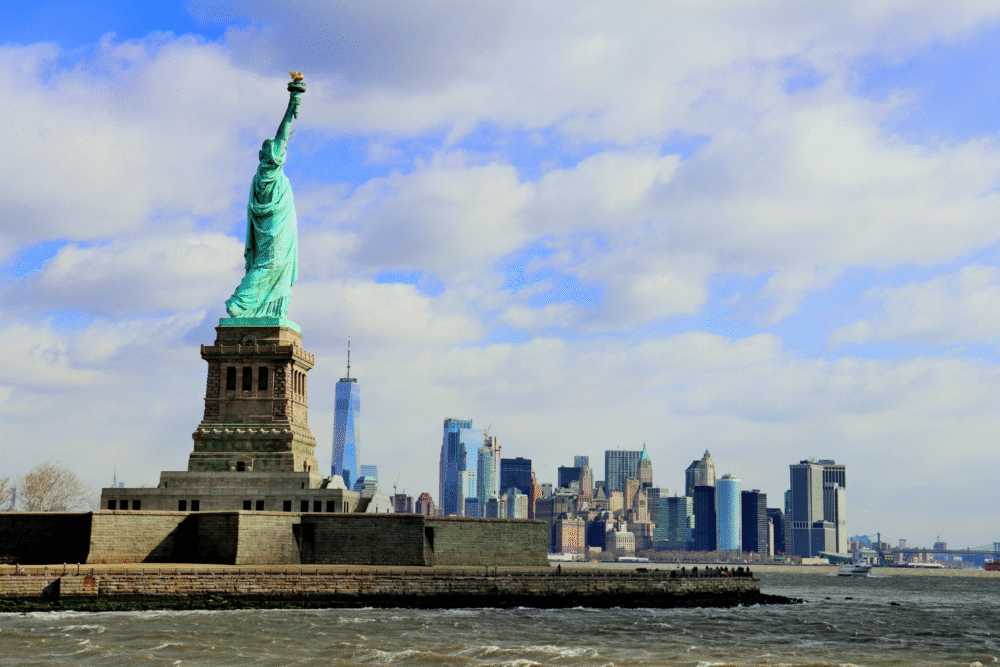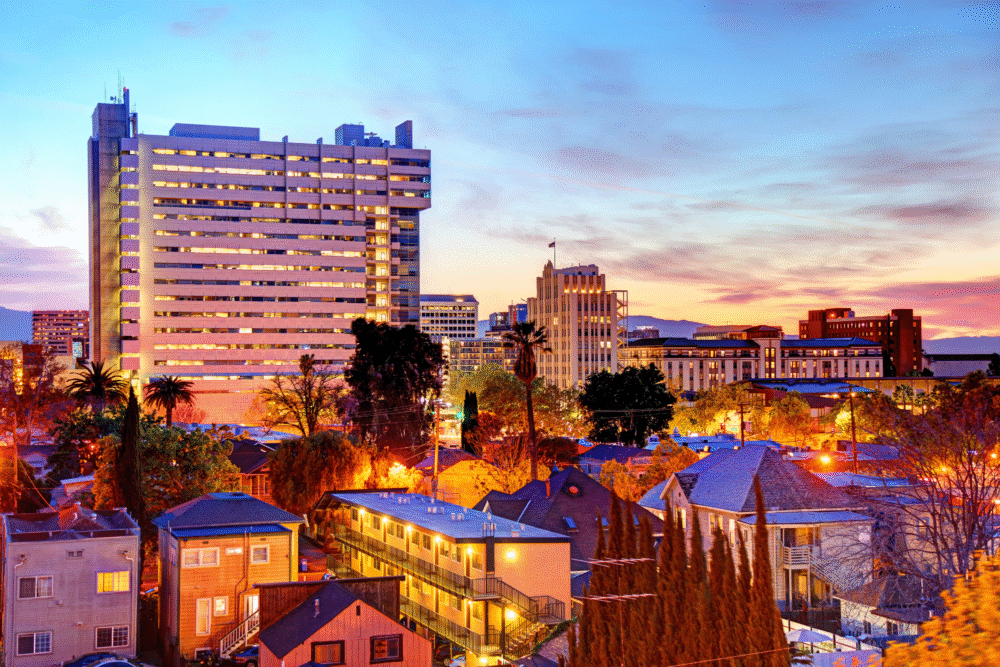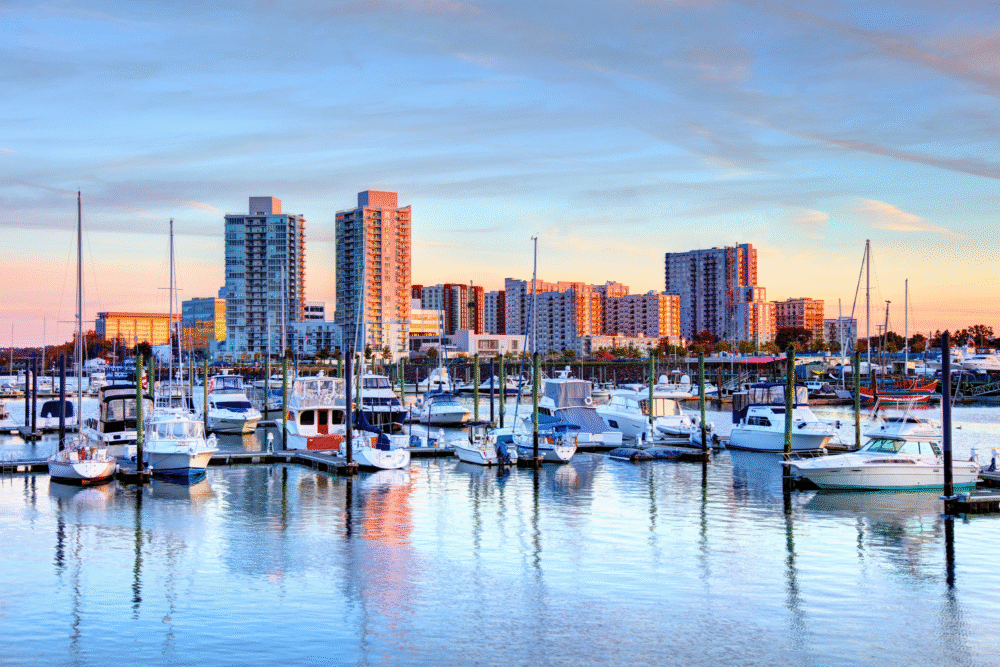The six-figure salary is the new middle-class benchmark in these cities.

The term “middle class” once conjured a clear image of financial stability, but that picture has become increasingly blurred in America’s most dynamic cities. The traditional goalposts for a comfortable life—owning a modest home, saving for the future, and having a little left over for fun—have shifted dramatically. In a growing number of urban centers, a six-figure income no longer feels like a path to wealth; it feels like the bare minimum for survival.
Here in California, we know this reality all too well. These are the cities across the U.S. where making $100,000 a year can still feel like you’re just getting by.
1. San Francisco, California.

It’s the poster child for American unaffordability, a city where even tech workers earning well over six figures often need roommates to get by. The primary driver is the astronomical cost of housing. A small, older two-bedroom apartment can easily rent for over $4,000 a month, and the median price for a single-family home remains stubbornly in the seven figures. This makes the foundational middle-class goal of homeownership a distant dream for most.
Beyond the insane housing market, the day-to-day costs for everything from a cup of coffee to a parking spot are among the highest in the nation. In San Francisco, a $150,000 salary can feel stretched thin after taxes, rent, and basic living expenses, leaving little room for savings. The city exemplifies how high wages can be completely neutralized by an even higher cost of living.
2. New York, New York.

The Big Apple has long been an expensive place to live, but the definition of “middle class” here has been completely rewritten. We’re not just talking about Manhattan anymore; the high costs have spread deep into boroughs like Brooklyn and Queens. A six-figure income might sound impressive, but it can quickly evaporate when a significant chunk of it is consumed by rent for a modest one-bedroom apartment.
The city’s high taxes and the steep price of everyday necessities like groceries, transportation, and childcare add to the financial pressure. The lifestyle that $100,000 can afford in most of the country—a comfortable home, a car, and significant savings—is simply not attainable for most in New York City. Here, a six-figure salary often just means you’re a well-paid renter.
3. San Jose, California.

As the undisputed capital of Silicon Valley, San Jose is a city where high incomes are the norm, but they are constantly chasing the even higher cost of living. The concentration of high-paying tech jobs has created an incredibly competitive and expensive housing market. The desire to live near major tech campuses has driven the median home price to a level that is out of reach for anyone not holding valuable stock options.
This intense economic pressure means that even a household earning a combined $200,000 can struggle with the costs of a mortgage, property taxes, and the high price of services like childcare. The traditional middle-class lifestyle is difficult to achieve when you are competing for resources with some of the wealthiest companies in the world. In San Jose, a six-figure income is simply the entry fee.
4. Boston, Massachusetts.

Boston is a hub for education, healthcare, and technology, and its economy draws high-earning professionals from around the world. This has created a housing market that is notoriously expensive, whether you are looking to rent or buy. The city’s historic, compact nature means there is limited housing stock, which keeps prices persistently high in desirable neighborhoods like the South End or Cambridge.
A six-figure salary is essential to even consider living comfortably within the city itself. The costs of transportation, including expensive parking and public transit passes, along with high utility and food prices, mean that a budget can get tight very quickly. A middle-class lifestyle in Boston requires an income that would be considered upper class in most other American cities.
5. San Diego, California.

Famous for its perfect weather and laid-back lifestyle, San Diego has a “sunshine tax” that has pushed its cost of living into the stratosphere. Housing is the biggest expense, with median home prices in 2025 rivaling those in much larger metropolitan areas. Even renting a modest apartment in a desirable neighborhood can consume a huge portion of a monthly budget.
For a family, the costs of utilities, gas, and groceries are all significantly higher than the national average. A six-figure income is necessary to afford a lifestyle that includes more than just the basics, allowing for savings and the occasional enjoyment of the city’s many attractions. In San Diego, the price of paradise is steep.
6. Los Angeles, California.

The sprawling metropolis of Los Angeles offers a diverse economy, but the cost of entry is incredibly high. While it is more spread out than San Francisco, the housing market is fiercely competitive across the entire county. A “starter home” is a concept that barely exists anymore, with even small bungalows in less-central neighborhoods commanding huge price tags. The cost of renting is equally daunting.
On top of housing, the necessity of a car means residents are hit with the triple whammy of high gas prices, expensive car insurance, and the time and money lost to traffic. In Los Angeles, a $100,000 salary is quickly diminished by these essential costs, making a comfortable middle-class existence a real challenge.
7. Seattle, Washington.

The tech boom, fueled by giants like Amazon and Microsoft, has completely transformed Seattle’s economy and cost of living. The influx of high-paid tech workers over the last two decades has driven up housing prices to levels that are unsustainable for those in other professions. Renting or buying a home anywhere near the city center now requires a significant income.
While the city doesn’t have a state income tax, the high costs of property, goods, and services offset this benefit. A middle-class lifestyle here is now predicated on having a tech-level salary. For teachers, artists, and service workers, the city has become increasingly unaffordable, pushing the definition of “middle class” well into the six figures.
8. Washington, D.C.

The nation’s capital is a magnet for ambitious professionals in government, law, and contracting, all of whom command high salaries. This has created an expensive and competitive environment. The cost of housing, both in the District itself and in the close-in suburbs of Virginia and Maryland, is exceptionally high. A modest townhouse can easily cost close to a million dollars.
The costs of daily life, from groceries to dining out and childcare, are also well above the national average. A six-figure income is the baseline requirement for a family to afford a comfortable home in a safe neighborhood with a reasonable commute. Anything less means facing a constant financial squeeze in this powerful and pricey city.
9. Honolulu, Hawaii.

Living in paradise comes at a very high price. As an island state, nearly all goods in Hawaii have to be shipped in, which dramatically inflates the cost of everything from food and furniture to gasoline. This “paradise tax” makes Honolulu one of the most expensive cities in the country. Housing is the biggest challenge, with limited land driving real estate prices to staggering levels.
A middle-class existence in Honolulu requires a substantial income just to cover the basics. The allure of beautiful beaches and a relaxed lifestyle is tempered by the financial reality that a six-figure salary is necessary to avoid living paycheck to paycheck. It’s a place where the views are incredible, but the prices are breathtaking.
10. Irvine, California.

Irvine represents the high cost of the idyllic American suburb. Known for its safety, meticulously planned communities, and top-rated public schools, it is a highly desirable place to raise a family in Southern California. This desirability has made it incredibly expensive. The median home price is well over a million dollars, a figure that is completely out of reach for a traditional middle-class household.
Even with a six-figure income, families can feel stretched thin by the combination of a high mortgage or rent payment, HOA fees, and the general high cost of living in Orange County. Irvine exemplifies how even the suburban dream now requires an upper-class income to be a reality.
11. Stamford, Connecticut.

As a major hub for finance and a popular commuter city for those working in New York, Stamford has a cost of living that reflects its proximity to immense wealth. The city is home to numerous hedge funds and corporations, which drives up the cost of housing and services. A comfortable single-family home in a good school district is a major financial undertaking.
Residents of Stamford face a double whammy: the high property taxes of Connecticut and the inflated prices of the New York metropolitan area. A six-figure salary is the minimum needed to manage these costs and maintain a lifestyle that feels solidly middle class. It’s a prime example of how the high costs of a megacity radiate outward, redefining affordability in the surrounding regions.
